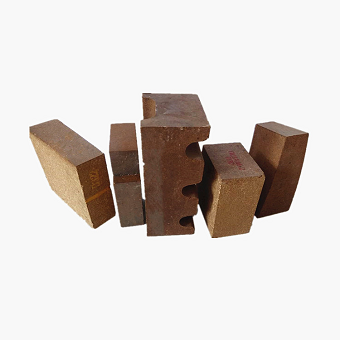Physical and chemical indicators of the Magnesium brick composition process
May 16, 2022
Composition of magnesium brick
Magnesium brick is made of more than 87% sintered magnesia as raw material. The main crystalline phase of the product is periclase, and there are also basic refractories with composite spinel, forsterite, forsterite, and a small amount of glass phase. Magnesium brick has strong alkali resistance and weak acid resistance (especially has a strong fluxing effect on B2O3, a few thousandths of B203 in magnesium brick can make the creep resistance of magnesium brick worse at 1200~1250℃) because its matrix binding component is mainly CMS-M2S system, so its thermal conductivity is good but deteriorates with the increase of temperature, the heat capacity increases with the increase of temperature, and the refractoriness is high (generally higher than 2000 ℃). But The softening temperature under load is only about 1550 °C, and the thermal resistance is poor. Some important properties of magnesium brick mainly depend on the characteristics of raw materials, the mineral composition, and the rice structure formed in the product, and are closely related to the density of the product.

Raw materials used and production process
The magnesia raw material is crushed into granules and powders, and after a certain proportion is added, the binder is added and mixed into the mud, and then the fired magnesium brick is made by forming, drying, firing, and other processes. The firing temperature of Qutong magnesium brick is generally 1500~1650℃, and the firing temperature of high-purity magnesium brick is as high as 1700~1900℃. The production process of chemically bonded magnesium brick is basically the same. Proper low-temperature heat treatment can be made into unburned magnesium brick.
Relevant information
-

Main properties of magnesium oxide refractory
Performance characteristics of magnesia refractories and other basic refractories Performance characteristics of magnesia refractories and other basic refractories Refractories containing more than 80% ... -

What properties of lightweight insulation fire clay bricks can be improved by the addition of kyanite?
Lightweight insulation fire clay bricks are a kind of shaped refractory material with clay as the main raw material, which is processed, shaped, dried, and calcined with clay. on the kiln. Due to the r ... -

How is the effect of white fused alumina abrasive used in refractory materials?
After mixing, forming, drying, and firing at high temperature in a shuttle kiln. The product has the characteristics of high refractoriness, good thermal shock stability of white corundum, high high te ... -

Characteristics of refractory magnesia chrome bricks for lime kiln
Lime kilns are mainly classified into square kilns and circular kilns. According to the classification of fired products, they can be divided into lime kilns, ceramic kilns, cement kilns, glass kilns, ...

